Computer Science Theory I
Artificial Intelligence
Randy J. Fortier
randy.fortier@uoit.ca
@randy_fortier
Outline
- Overview
- Human processes and their machine equivalents:
- Sensation
- Perception
- Cognition
- Memory and knowledge representation
- Reasoning
- Decision-making and problem solving
- Producing and understanding language
- Learning
- Motor control
Computer Science Theory I
Artificial Intelligence - An Overview
What is Artificial Intelligence?
- A broad category of research initiatives aimed to make non-human agents display intelligent-like behaviour
- The problem of whether or not a machine or computer program can become intelligent is the subject of much debate in philosophy, computer science, and cognitive psychology
- In humans, at least, intelligence comes from perception and cognition
- These are primarily provided by our nervous system
The Turing Test
- Alan Turing developed a test for artificial intelligence in 1950:
- A machine and a human are both separated from the judge
- The judge interacts with both the machine and the human
- "If the judge cannot reliably tell the machine from the human, the machine is said to have passed the test"
- The Turing test has been ostensibly been passed multiple times recently, mostly by chat bots
- These are computer programs that chat with you, as if they are real people
- e.g. Cleverbot
Case Study: Driverless/Autonomous Cars
- Driverless cars combine the following AI topics:
- Computer vision
- Prediction, collision avoidance
- Communication with other agents
- Navigation
- Constraint satisfaction
- Motor control
- ... and more ...
Case Study: Driverless/Autonomous Cars
- Also check out: Chris Urmson's TED Talk
Computer Science Theory I
Artificial Intelligence - Sensation
Sensation
- Sensation is the raw collection of information from the environment
- Not generally associated with intelligence, but necessary for it
- Machines already have sophisticated devices for this purpose, similar to (or sometimes better than) their human equivalents
Sensation - Human
- Human sensation (the five major senses):
- Vision
- eyes detect visible light
- Hearing
- ears detect sound waves
- Touch
- skin detects pressure (also heat, …)
- Taste
- taste buds detect chemicals
- Smell
- olfactory sensors detect chemicals
Sensation - Machine
- Machine sensation (simulating the five major senses):
- Vision
- CCD/CMOS detect visible/IR/UV light, Lidar/Radar detects objects
- Hearing
- microphones detect sound waves
- Touch
- haptic sensors detect pressure, temperature sensors detect heat, …
- Taste/Smell
- chemoreceptor sensors detect chemicals
Sensation - Technology
- Self-driving cars use a number of sensors:
- Lidar
- Uses reflected light from a laser
Used to identify other objects on/near the road - CCD
- Detects visible light
Used to read street signs, traffic signals, etc. - GPS
- Uses satellites to determine position
Used to determine current position - Speedometer, traction sensor
- Used to differentiate safe vs. unsafe driving
Computer Science Theory I
Artificial Intelligence - Perception
What is Perception?
- Perception is the process by which raw information, collected by the sense, is processed into a useful form
- e.g. For raw visual input: recognizing shapes, letters, faces, and emotions, as well as tracking objects as they move
- e.g. For raw audio input: recognizing words, threatening sounds, infants crying, and finding the direction of sounds
Perception - Computer Vision
- Computer vision topics:
- Tracking objects (e.g. suspects fleeing scene in surveillance video)
- Gesture recognition (e.g. using hand gestures to control your TV)
- Recognizing faces (e.g. biometric login for your smart TV or phone)
- Recognizing presence (e.g. counting the occupants in carpool lane, counting people at a concert)
- Recognizing objects (e.g. weapons), distance, motion (e.g. speed)
- Character recognition (e.g. license plate readers, scanning printed documents)
- 3D scene reconstruction (e.g. being able to rotate the scene based on an image, revealing obscured parts of a room)
- Augmented reality (e.g. games, driver alerts)
Perception - Speech Recognition
- Converting audio into a stream of recognized natural language text
- Software that looks for audio patterns to replace with text equivalents
- This is an example of a Greedy Algorithm strategy, similar to divide and conquer discussed in the last lecture section
- Speech recognition demo
- Software that looks for audio patterns to replace with text equivalents
Perception - Self-driving Car
- In a self-driving car, perception is the key to:
- Correctly recognizing
- Street signs
- Traffic signal status
- Identifying hazards
- Potholes
- Snow drifts
- Construction sites
- Correctly recognizing
Computer Science Theory I
Artificial Intelligence - Cognition
What is Cognition?
- Cognition involves the high-level brain activities:
- Memory and knowledge representation
- Language
- Reasoning
- Decision-making and problem solving
- Learning
Cognition - Knowledge Representation
- Computers already have memory
- In fact, a computer's memory is more reliable than a human's (in general)
- The challenge comes from figuring out how to represent knowledge
Cognition - Knowledge Representation
- Knowledge representation (KR) is how to store knowledge, beyond basic facts
- Methods being used to represent knowledge:
- Rule systems
- Semantic networks
Cognition - Knowledge Representation
- Knowledge representation (KR) is how to store knowledge, beyond basic facts
- Methods being used to represent knowledge:
- Rule systems
- Describe some conditions, and the course of action (often with a probability)
- e.g. A patient experiences chronic headaches, may have:
- High blood pressure (58%)
- Meningitis (12%)
- Brain tumour (9%)
- Semantic networks
- Rule systems
Cognition - Knowledge Representation
- Knowledge representation (KR) is how to store knowledge, beyond basic facts
- Methods being used to represent knowledge:
- Rule systems
- Semantic networks
- An informally-structured graph showing named relationships between concepts, perhaps learned through data mining or natural language processing of large corpora
- e.g. Napoleon ––birth year—> 1769
Cognition - Knowledge Representation with Semantic Networks
- A simple semantic network:
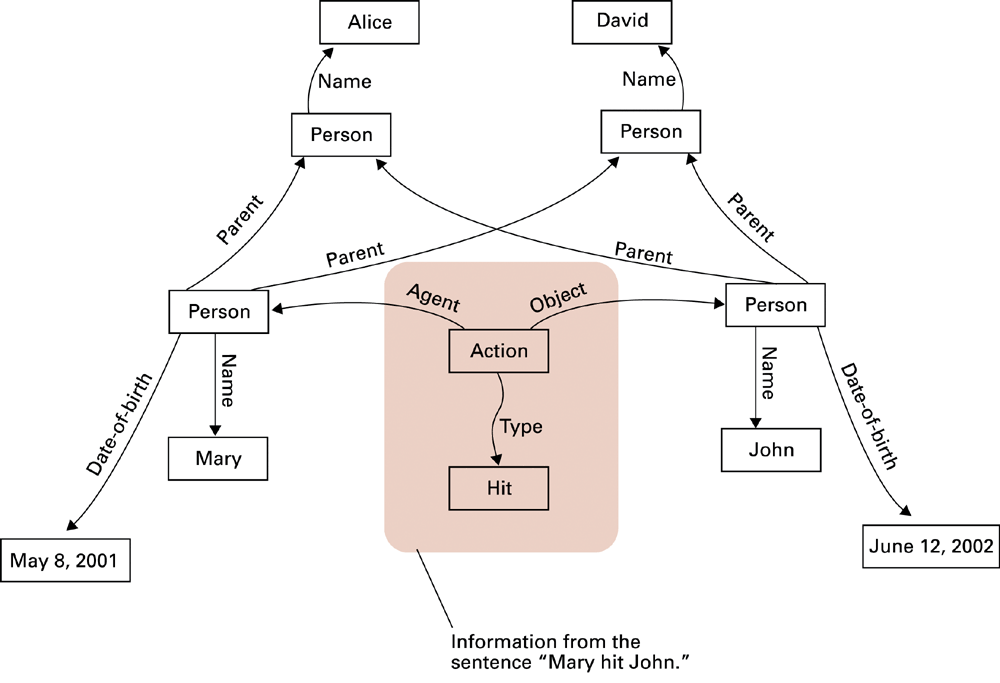
Cognition - Knowledge Representation with Semantic Networks
- A more realistic semantic network:
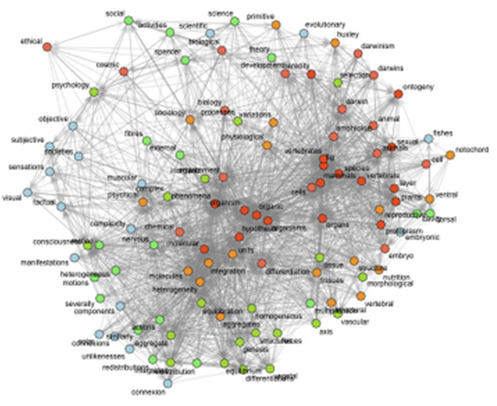
Cognition - Language
- Lexical analysis
- finding words
- Syntax analysis
- understanding sentence structure and word groups
- Semantic analysis
- understanding sentence meaning, usually from the component word groups
- Pragmatics
- Dealing with references to other sentences or the domain world (e.g. she, the manager, their car), idioms, etc.
Cognition - Language
- Formal semantics: Use a math representation for each word, which can be combined in a well-defined way
- Works close to 100%, but only a small subset of natural languages (e.g. English) have been implemented
- Probabilistic methods: Use a probability, which is influenced by context, to guess the meaning of a word or phrase
- Works close to 80%, yet there are systems which seem to understand all of English in some way or another
Cognition - Reasoning
- Rule-based systems
- Since rules are implications (similar to if-then), we can simply follow the chain of implications to a conclusion
- When rules are probabilistic, we can follow the tree of implications to a set of conclusions, each with a probability
Cognition - Reasoning
- A simple rule-based system:
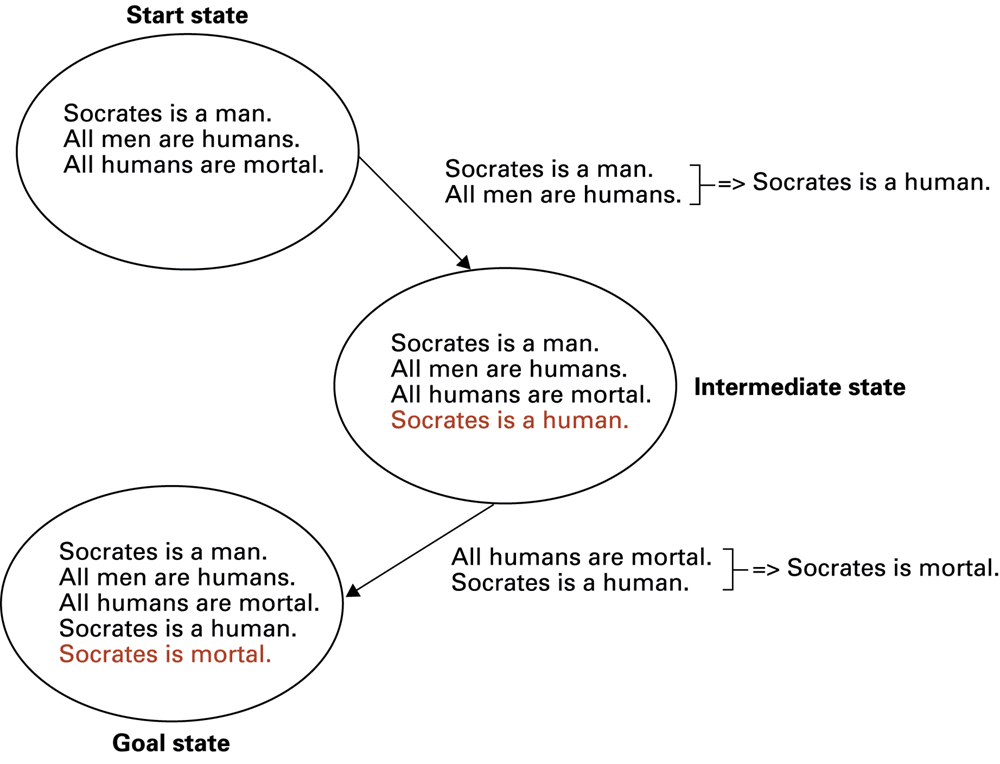
Cognition - Reasoning
- Symbolic programming
- The values are represented in symbolic form
- The rules are axioms from mathematics:
- Rules for solving, simplifying
- Rules for differentiation (e.g. power rule)
- Rules for integration (e.g. product rule)
- Rules for logic (e.g. inference, conjunction)
- Rules for linear algebra (e.g. inverting a matrix)
\begin{equation}\label{01} \begin{split} F &=sin(x^2) + cos(x)\\ \end{split} \end{equation}
Cognition - Decision-making
- State graphs
- A graph showing all possible states, and the transitions between them
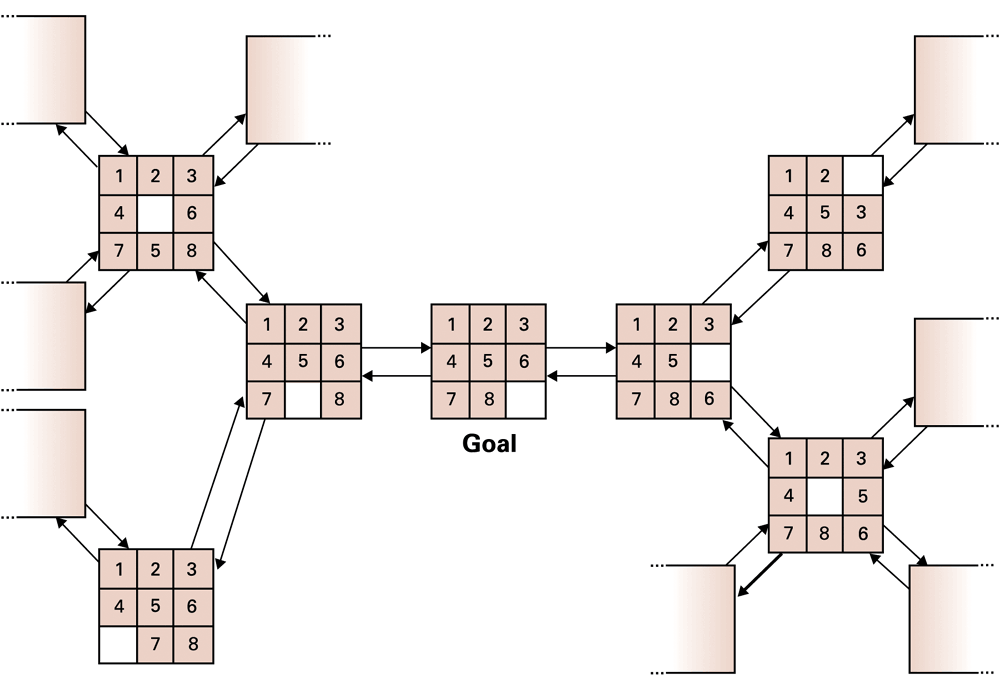
Cognition - Decision-making
- Decision tree
- A tree where each node's children represent the decisions that can be made at that state
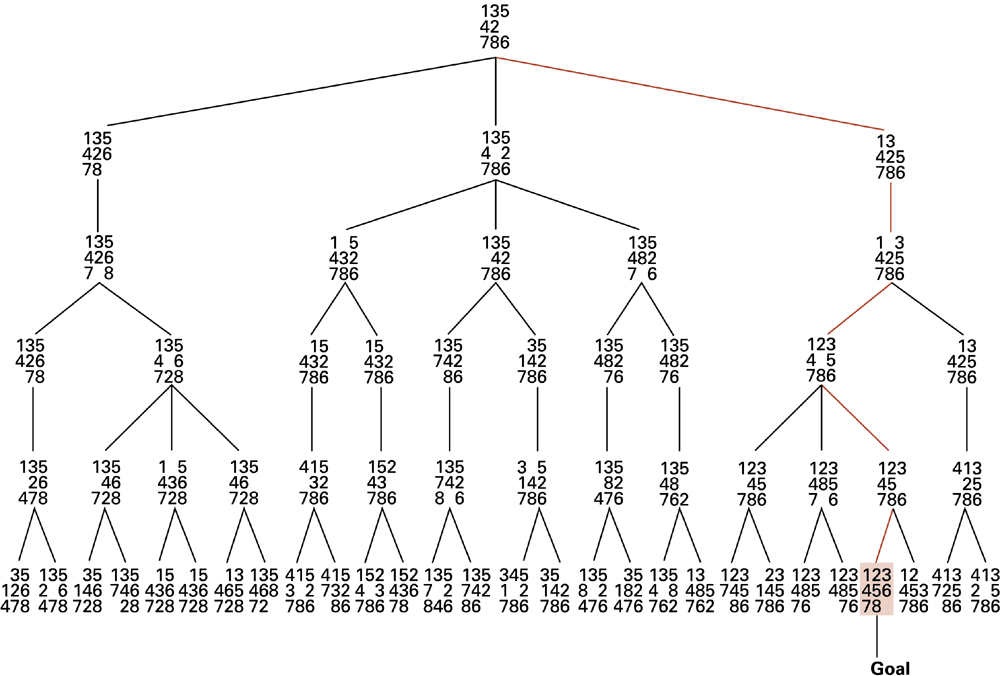
Cognition - Game Playing
- Backgammon
- IBM's TD-Gammon was the first program capable of beating the world's best 1992
- Checkers
- U of Alberta's Chinook beat the world's best in 1995
- Chess
- IBM's Deep Blue vs. world champ Garry Kasparov
- 1996: Kasparov won 4-2
- 1997: Deep Blue won 3.5-2.5
- Go
- Taiwan's MoGo and Rémi Coulom's Crazy Stone have beat the world's best Go players in 2015
Cognition - General Game Playing
- Competitors write programs to solve previously unknown games
- Competitors are given a file which describes the rules of the game
- How to go from one game state to another, how a game is won, lost
- The competitors' program reads the file and comes up with one move at a time to play
- Competitors are given a file which describes the rules of the game
Cognition - Pathfinding
- Pathfinding is a well-known problem, used by:
- Games
- GPS navigation devices
- The basic algorithms for pathfinding are:
- A* (A-star) algorithm
- Dijkstra's algorithm
Cognition - Pathfinding
- Pathfinding for single units is fairly straightforward:
Cognition - Pathfinding
- Multi-unit (swarm) pathfinding is more complicated:
Cognition - Pathfinding Example
- Pathfinding with Dijkstra's Algorithm:
- Break down the world into a rectangular grid
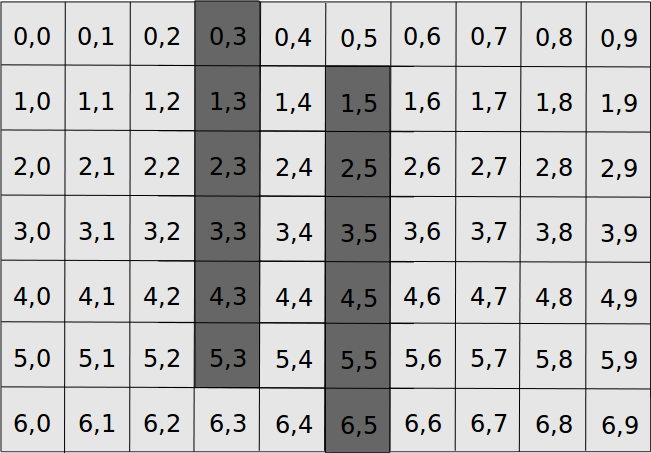
Cognition - Pathfinding Example
- Pathfinding with Dijkstra's Algorithm:
- Choose your start and goal locations
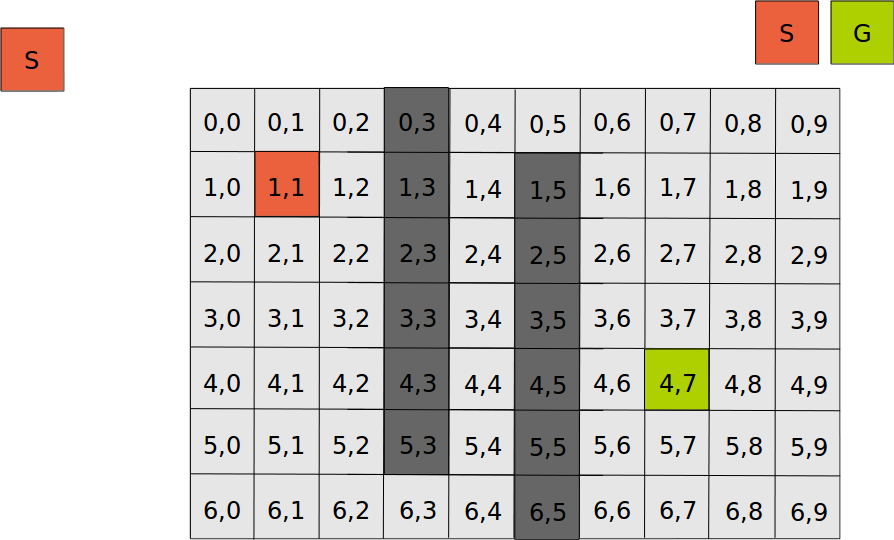
Cognition - Pathfinding Example
- Pathfinding with Dijkstra's Algorithm:
- Examine all spaces adjacent to the start position
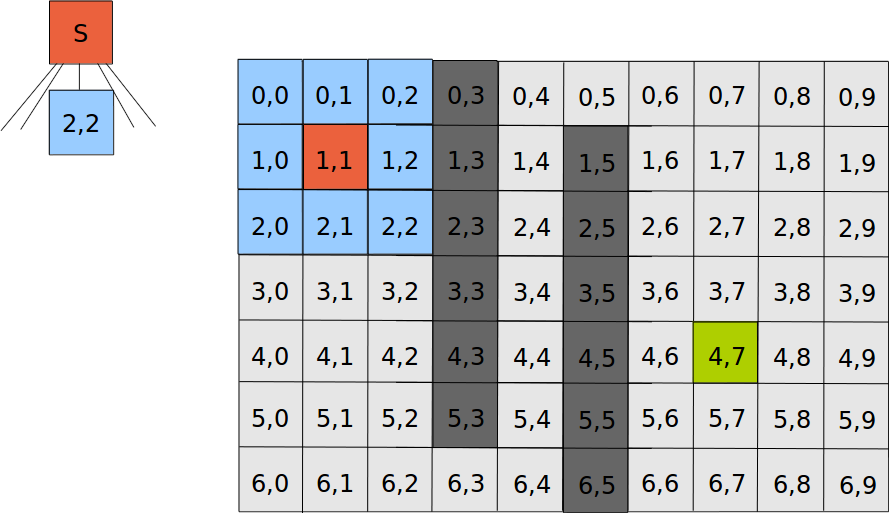
Cognition - Pathfinding Example
- Pathfinding with Dijkstra's Algorithm:
- From each examined space, examine its adjacent spaces
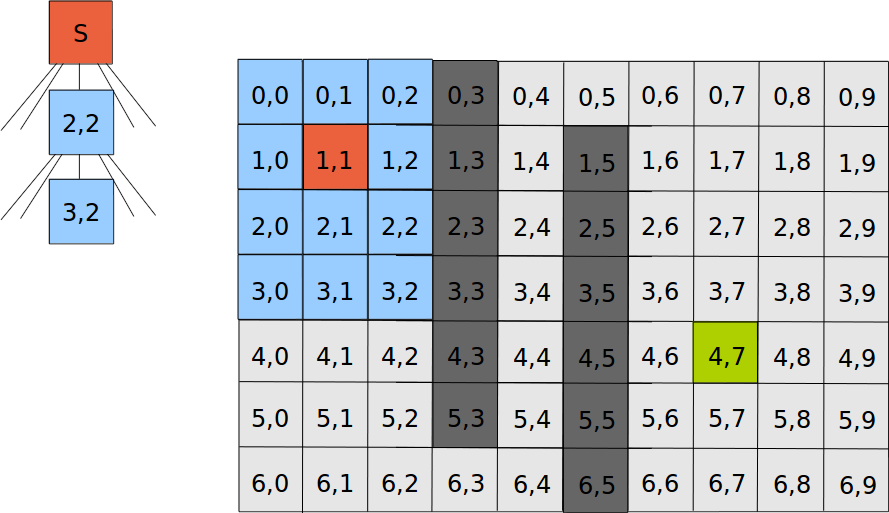
Cognition - Pathfinding Example
- Pathfinding with Dijkstra's Algorithm:
- Repeat the process, remembering the fastest way to get to each space
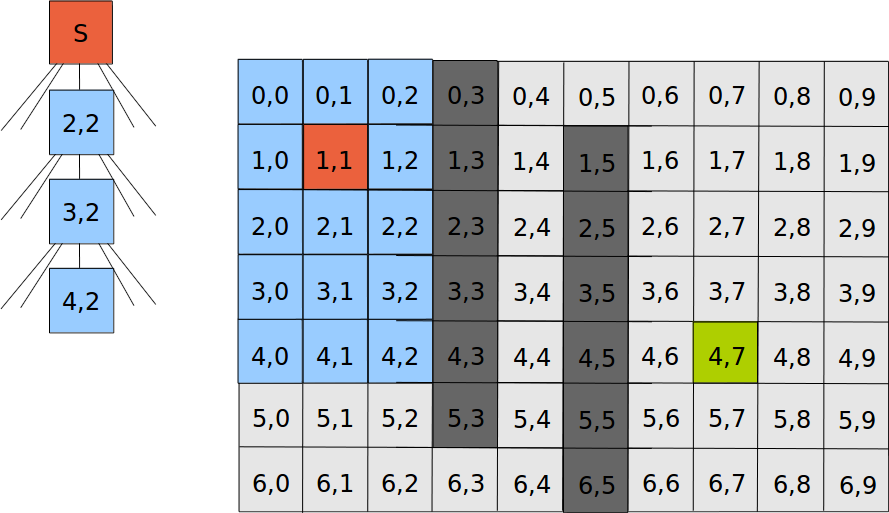
Cognition - Pathfinding Example
- Pathfinding with Dijkstra's Algorithm:
- Repeat the process
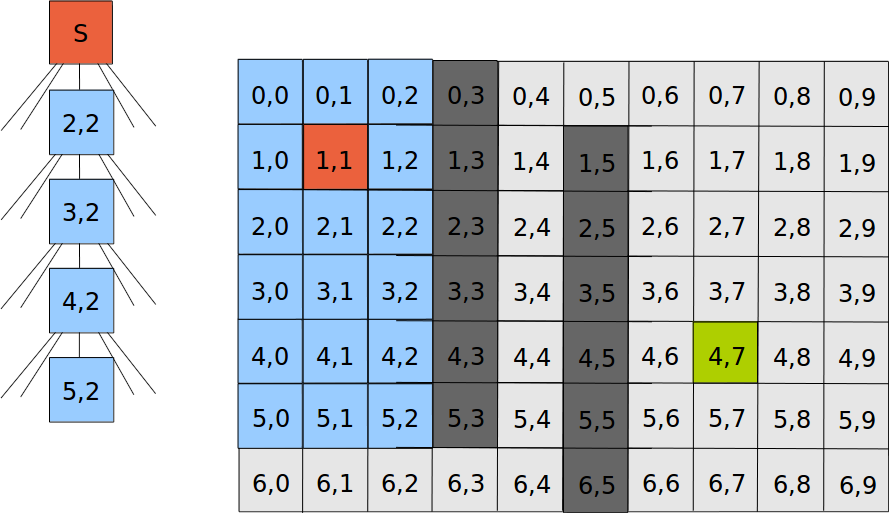
Cognition - Pathfinding Example
- Pathfinding with Dijkstra's Algorithm:
- Repeat the process
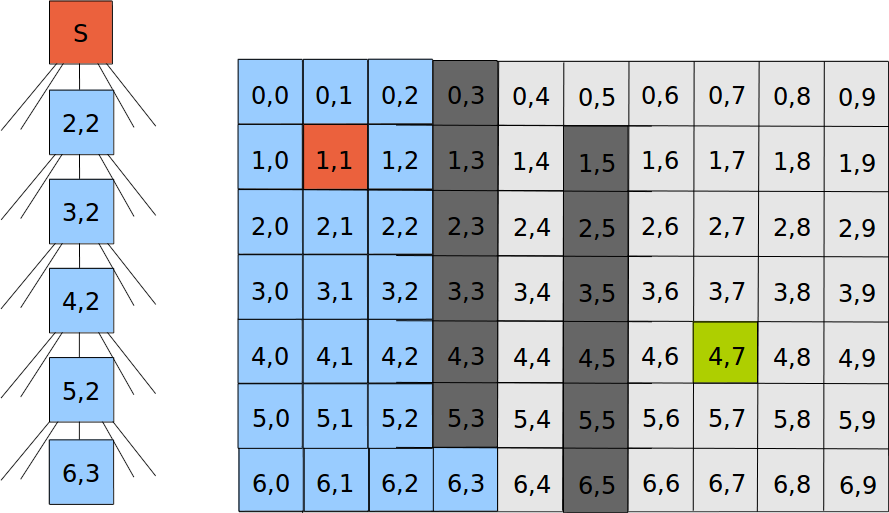
Cognition - Pathfinding Example
- Pathfinding with Dijkstra's Algorithm:
- Repeat the process
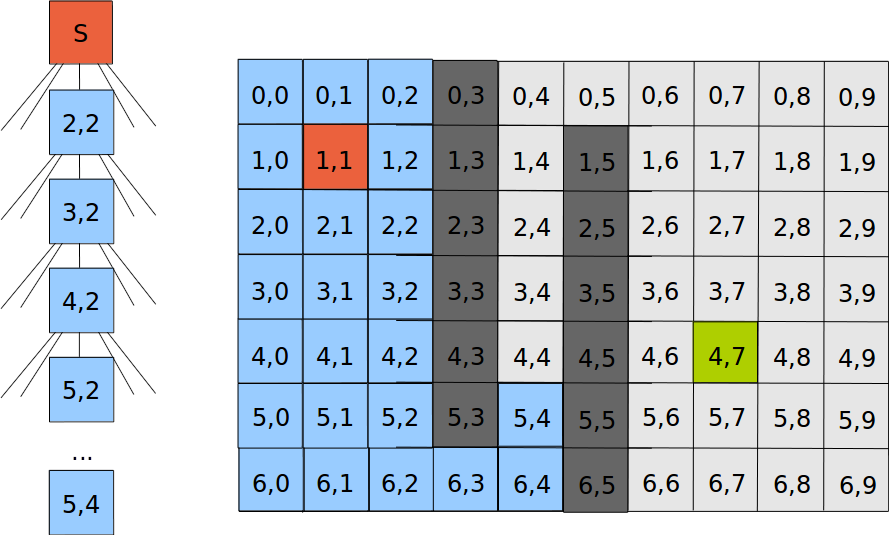
Cognition - Pathfinding Example
- Pathfinding with Dijkstra's Algorithm:
- Repeat the process
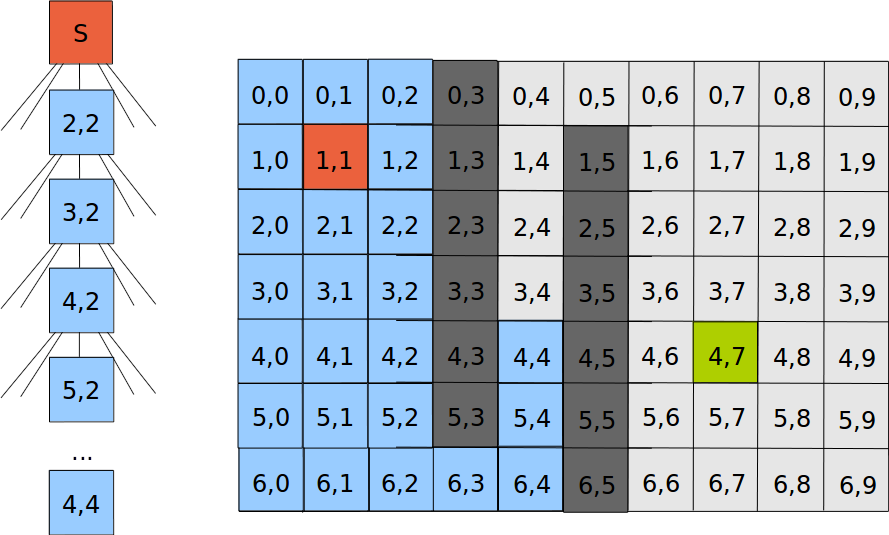
Cognition - Pathfinding Example
- Pathfinding with Dijkstra's Algorithm:
- Repeat the process
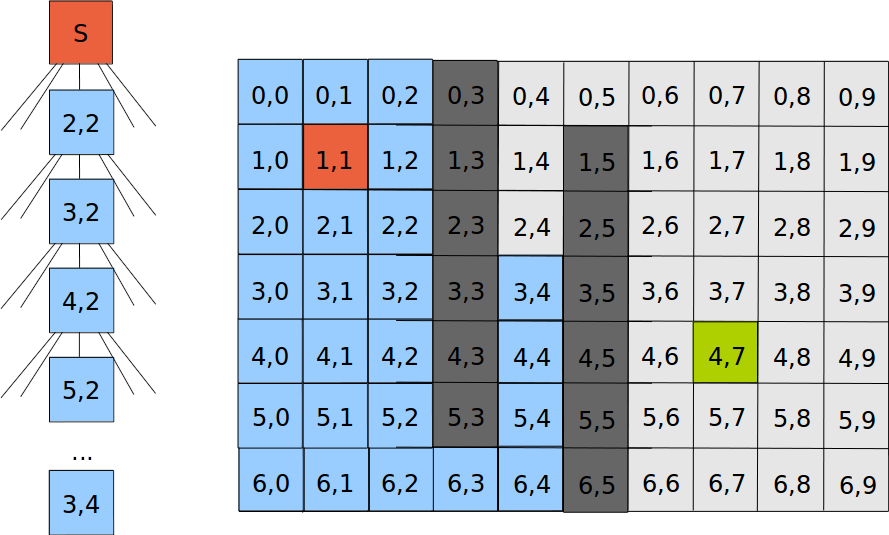
Cognition - Pathfinding Example
- Pathfinding with Dijkstra's Algorithm:
- Repeat the process
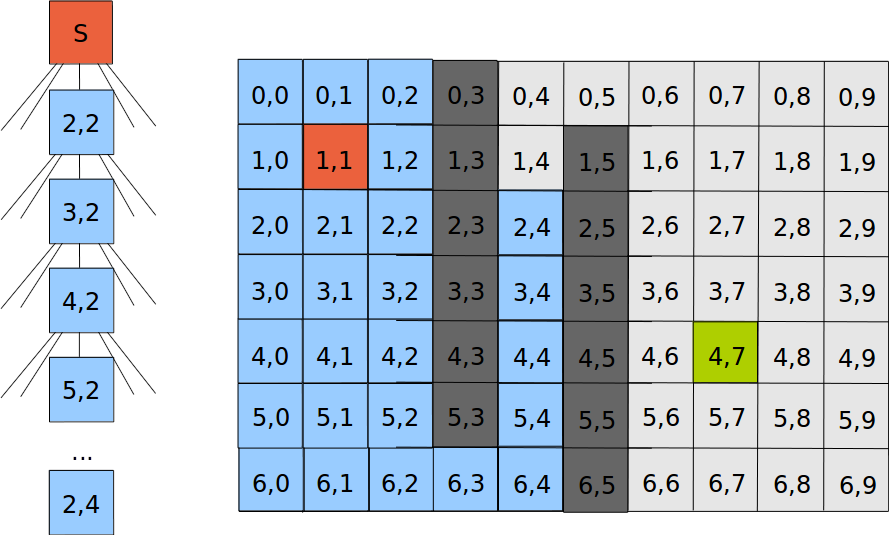
Cognition - Pathfinding Example
- Pathfinding with Dijkstra's Algorithm:
- Repeat the process
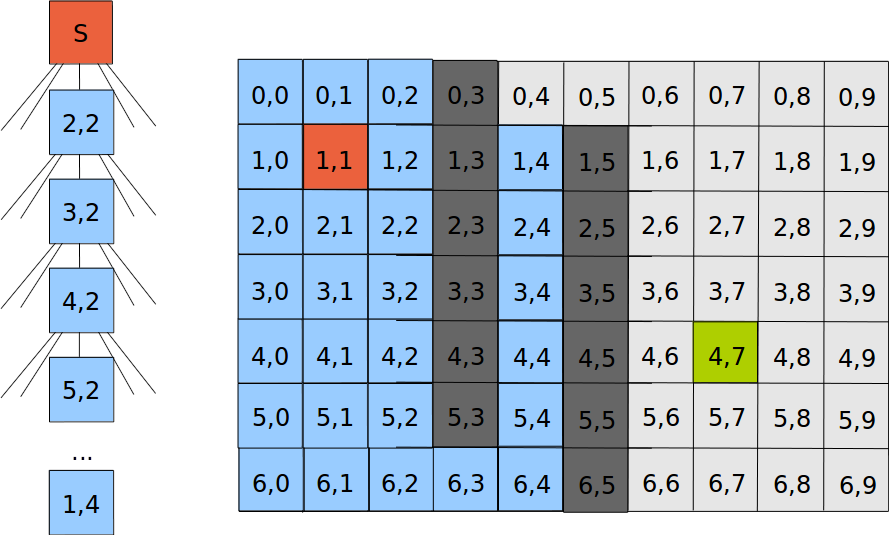
Cognition - Pathfinding Example
- Pathfinding with Dijkstra's Algorithm:
- Repeat the process
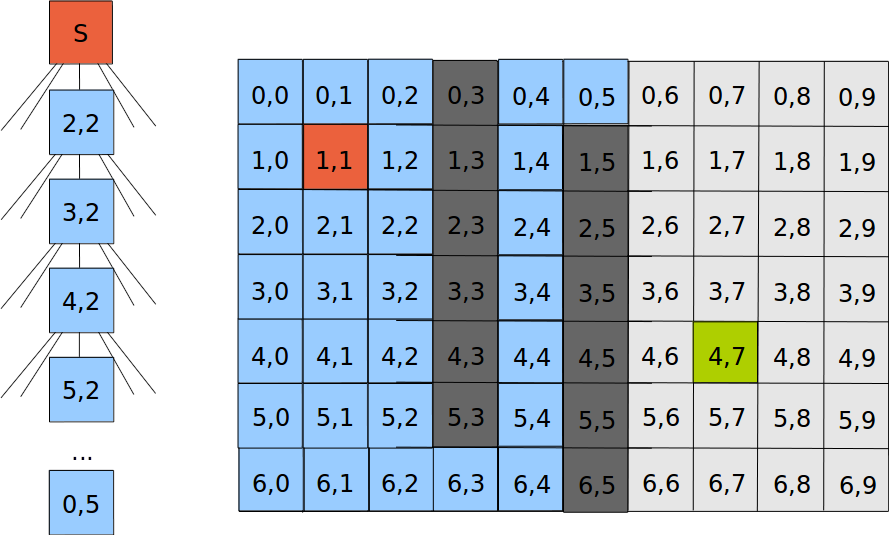
Cognition - Pathfinding Example
- Pathfinding with Dijkstra's Algorithm:
- Repeat the process
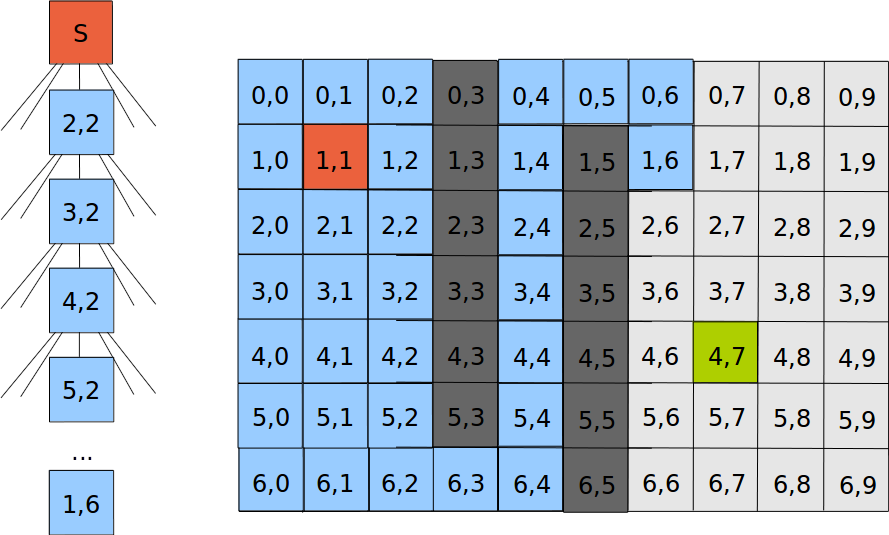
Cognition - Pathfinding Example
- Pathfinding with Dijkstra's Algorithm:
- Repeat the process
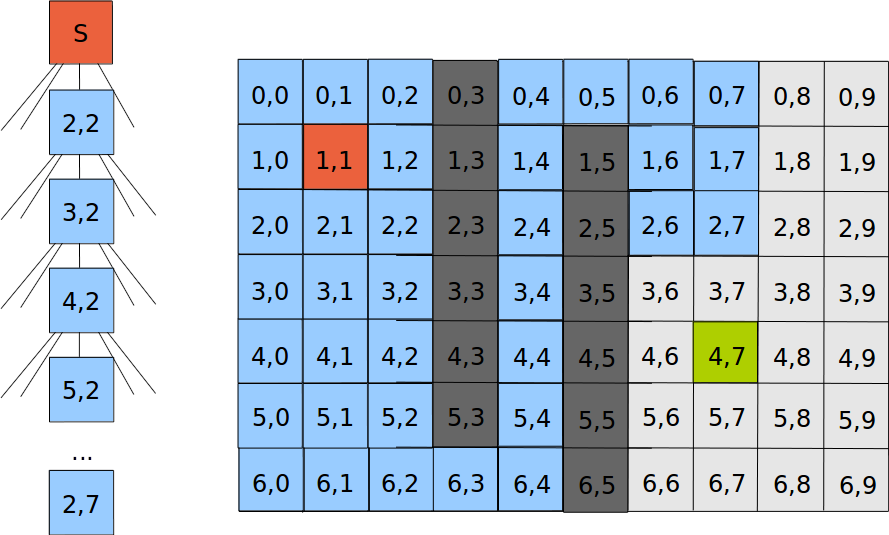
Cognition - Pathfinding Example
- Pathfinding with Dijkstra's Algorithm:
- Repeat the process
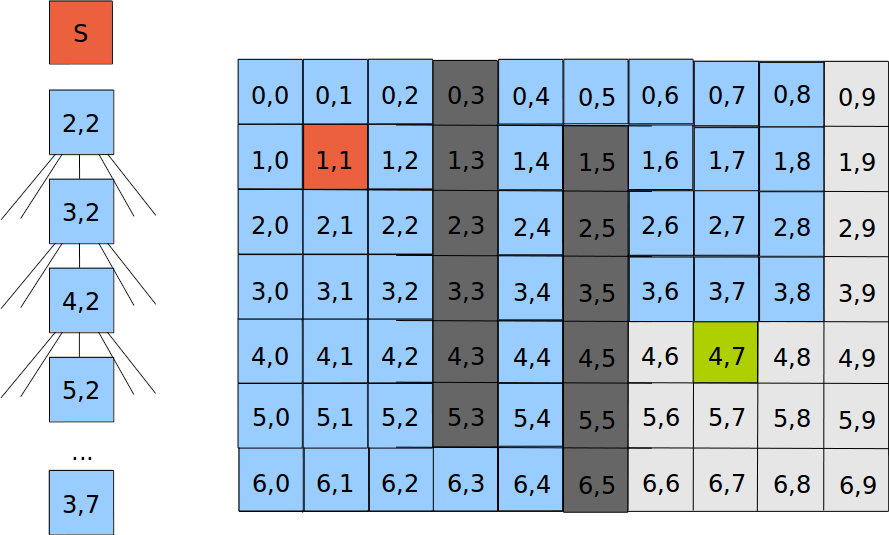
Cognition - Pathfinding Example
- Pathfinding with Dijkstra's Algorithm:
- Repeat the process
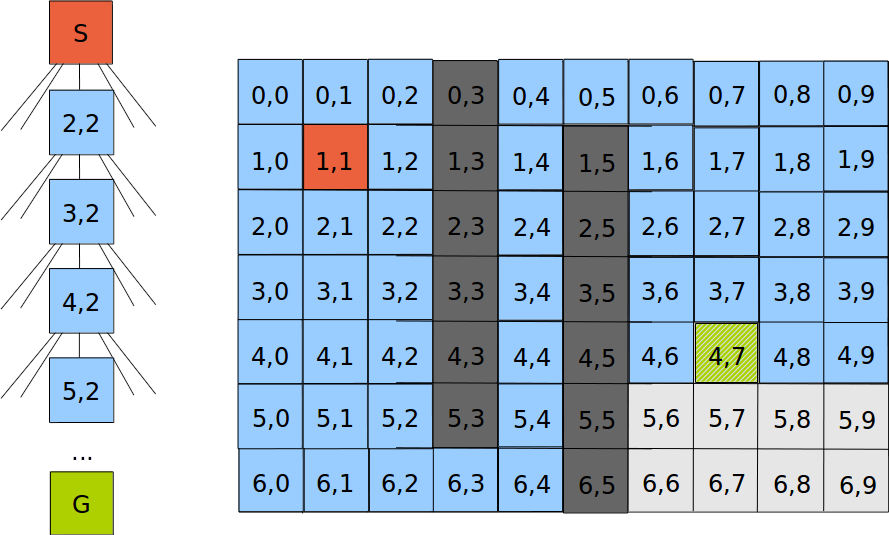
Cognition - Pathfinding
- A website for experimenting with different pathfinding techniques:
Cognition - Machine Learning
- Machine learning generally involves training:
- The program makes decisions, and they are evaluated
- Good decisions are reinforced, bad decisions are ignored
Cognition - Machine Learning
- Unsupervised training:
- A set of problems are given
- The program tries to find relationships between them
- e.g. Finding related articles on BBC.com, Vice.com, etc.
- Supervised training:
- A set of problems and solutions are given
- The program is modified, running it against the problems multiple times, choosing the best modifications
- e.g. E-Mails, marked as either spam or not spam
Cognition - Machine Learning
- Common machine learning techniques:
- Artificial neural networks (ANNs)
- The connection between neurons is reinforced by correct solutions
- Genetic algorithms
- Future solutions are based on the level of fitness of existing solutions
- Bayesian networks
- Probabilities are updated according to the actual frequency of events
- Artificial neural networks (ANNs)
Cognition - Machine Learning
- Artificial neural networks use a simulation of neurons (brain cells) to solve problems
- ANNs have been used to solve many problems:
- Computer vision (e.g. stop sign recognition)
- Decision-making (e.g. medical diagnosis)
- Classifying data (e.g. is this message spam?)
- Game-playing (e.g. blackjack)
- ANNs have been used to solve many problems:
Cognition - Machine Learning
- Biological neurons have a relatively complicated structure:

Cognition - Machine Learning
- We can simulate the same process in software:

Cognition - Machine Learning
- A simple neural network
- Nodes at the bottom are input nodes (connected to sensors)
- Nodes at the top are control nodes (connected to motors)
- Nodes in between represent more and more abstract concepts
- An ANN with multiple middle layers is popularly called a deep learning network
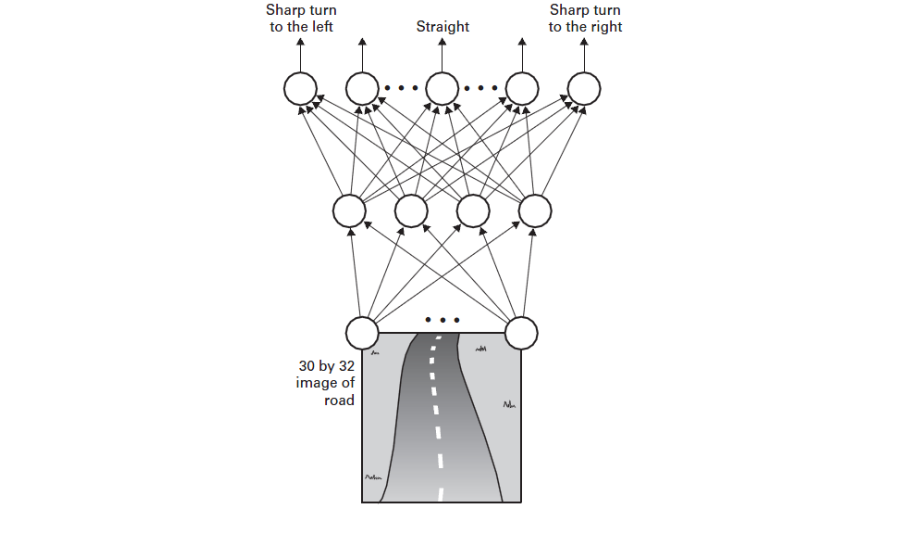
Cognition - Machine Learning
- Determine how to represent the problem as a string or number
- Randomly generate a bunch of solutions:
- Consider each solution a chromosome
- Each component of the chromosome is a gene
- Using rules of genetics, continually generate more solutions:
- Each chromosome (solution) is evaluated on its fitness (quality of the solution)
- Choose parents probabilistically, based on fitness (selection)
- To reproduce, combine genes from the different chromosomes (crossover)
- Optionally, also include mutations on individual chromosomes (mutation)
- Example: BoxCar2D
Cognition - Machine Learning
- Bayesian networks are built on top of Bayesian inference
- The use of Bayes theorem to infer, using Bayesian probability:
- P(A) – The independent probability of A
- P(B) – The independent probability of B
- P(A|B) – The probability of B, given that A has occurred
- P(B|A) – The probability of A, given that B has occurred
- The use of Bayes theorem to infer, using Bayesian probability:
\begin{equation}\label{02} \begin{split} P(A|B) &= \frac{P(B|A)P(A)}{P(B)}\\ \end{split} \end{equation}
Cognition - Self-driving/Autonomous Car
- In a self-driving car, many techniques may be combined for the car to function:
- ANNs for adapting speed, based on speed limit signs
- Pathfinding for navigation
- Constraint satisfaction, decision tree search for avoiding collisions (brake, turn left, turn right?)
- Bayesian networks for predicting other drivers', cyclists', and pedestrians' actions
Computer Science Theory I
Artificial Intelligence - Summary
Another Case Study: RoboCup
Wrap-Up
- In this section, we learned about:
- How we humans interact with the world around us
- Collect information
- Behaviour
- How humans collect information from their environments
- How machines can collect information from their environments
- How we humans process information and determine how to behave
- Perception
- Cognition
- How to mimic this information processing in machines
- How we humans interact with the world around us